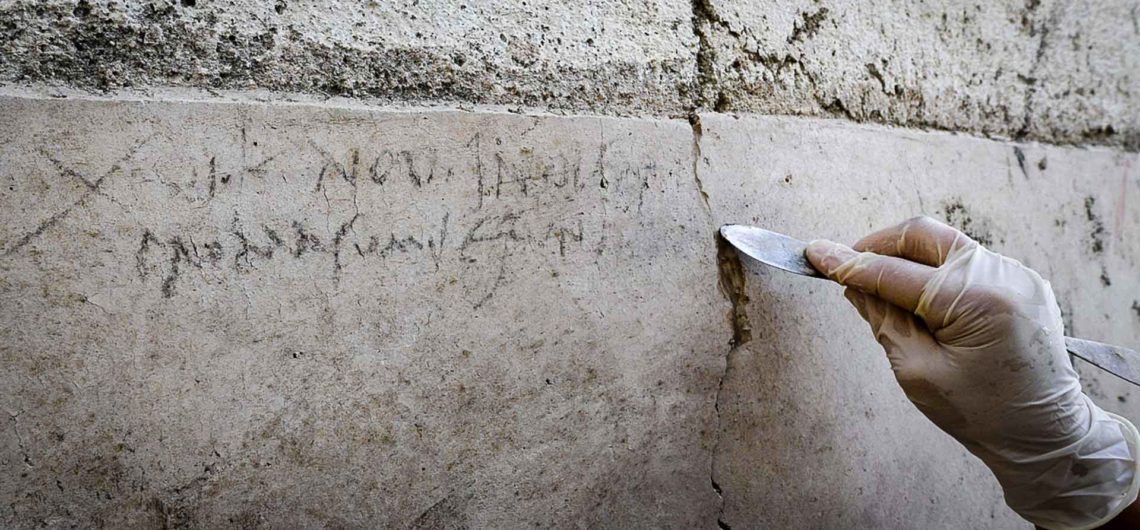A recent discovery in Pompeii seems to change without any doubt the date of the catastrophic eruption of Mt Vesuvius that destroyed the ancient Roman cities in the I century AD.
In a letter to the historian Tacitus written 25 years after the tragic event, Pliny the Younger recalls the last days of his uncle and the violent eruption of Mt Vesuvius dating it back to “nonum kal Septembres”, which is nine days before the beginning of September or the 24th of August 79 AD.
A day that has always been taken for granted to calendar this natural disaster. Until now.
A recent discovery seems to prove that Pliny was wrong once for all. A week ago a team of archaeologists found in a house an ancient charcoal inscription, which suggests that the devastating eruption of Mount Vesuvius took place in October rather than in August. The writing, discovered on the wall of a villa during a new series of excavations in the Regio V, reports the date of 17th October (16th day before the Calends of November), which supports the theory that the eruption happened a week later, on the 24th of October 79 AD. As Massimo Osanna, head of Pompeii Archaeological Site stated “the charcoal, is extremely fragile and evanescent so it could not last a long time […] it is more than likely that it was written in 79 AD shortly before the eruption itself”.
Is it possible that Pliny the Younger recorded the wrong date?
The problem is that his original letter was written many years after the eruption and it did not survive to the present day. Our modern reading of the text is based instead on transcriptions and translations made over the centuries, mostly by monks, who could probably miscopied or miswritten it.
Nonetheless there were several details in Pompeii history that made historians and archaeologists suspicious about Pliny’s letter and the subsequently translations: the finding of pomegranates, walnuts, and newly-harvested wine during the excavations suggested the Roman city was buried by Mt Vesuvius in Autumn. Or the discovery of a coin with the effigy of the emperor Titus (79-81 AD) together with the inscription “Imp XV”, which sanctioned the fifteenth imperial acclamation of the “princeps”. A renewal that took place only in September 79 AD, definitely after the canonical date of the eruption of Mt Vesuvius.
Even if the date is certain what remains obscure is the meaning of the inscription engraved on the wall of the villa: “XVI (ante) K(alendas) Nov(embres) in[d]ulsit pro masumis esurit[ioni]” could be translated as “on October the 17th, he ate in an excessive manner” or as Giulia Ammannati, Lecturer in Latin Palaeography recently suggested “on October the 17th, they took it in the oil pantry”.
A one-of-a-kind inscription that will certainly give rise to a historical and archaeological debate that will represent a further step forward in the reconstruction of the history of the Roman cities destroyed by the violence of the eruption of Mt Vesuvius.

Comments